|
||||||||||
|
|
||||||||||
|
||||||||||
|
|
||||||||||
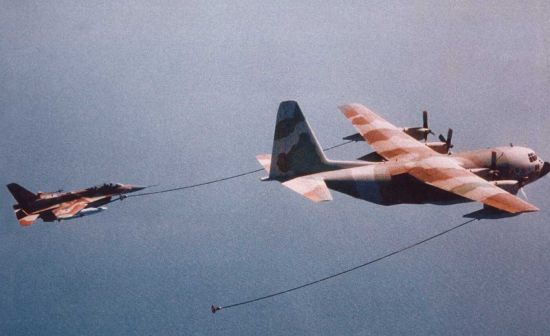
As the tanker flies straight and level, the pilot of the receiving plane flies his aircraft around until the probe links up with the drogue. Once the probe is in the basket, the aerodynamic drag acting on the drogue forces the drogue and probe to connect together. A valve then opens allowing the tanker to pump fuel into the attached aircraft. Once connected, both planes must maintain straight and level flight at the same speed until the fuel transfer is complete. The receiving pilot then slows his plane down to pull the probe from the drogue basket.
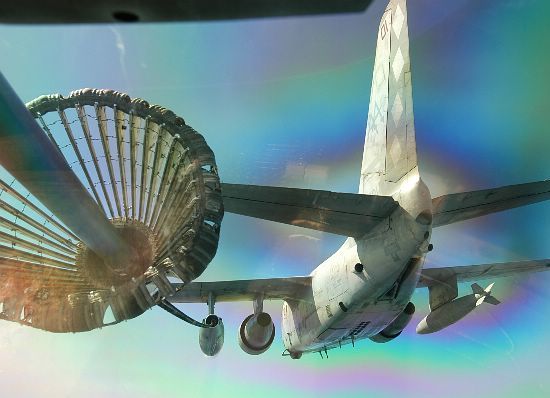
An alternate approach to aerial refueling is the boom-and-receiver or flying boom system that is used only by the US Air Force. This technique features a rigid, telescoping tube called a boom. At the end of this boom is a nozzle that plugs into the receiver aircraft to transfer fuel. Another key component of the boom is a small wing or control surface located near its end. This wing or ruddervator, often formed in the shape of a shallow V, enables an operator in the tanker to steer the boom and direct it towards the receiving aircraft. The plane that needs fuel is equipped with a socket called a receiver. This socket is a port located along the centerline of the plane and usually placed just behind or just in front of the cockpit. The nozzle of the tanker boom is designed to fit into this receiver.
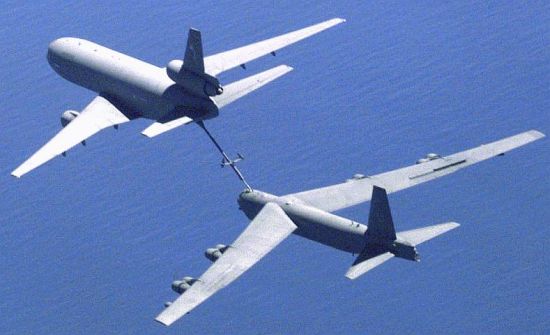
The refueling procedure requires the tanker to fly straight and level at a constant velocity. The receiving aircraft then closes in and moves to a standard position behind and below the tanker boom. The two aircraft continue to fly in this formation while the boom operator in the tanker's tail uses a joystick to move the boom into position just above the receiver of the plane to be refueled. The operator then extends the telescoping component of the main boom until the nozzle is inserted into the receiver. This connection causes valves to open on both aircraft so that fuel can be pumped to the plane that is being refueled. Once the transfer is complete, the valves are closed and the boom automatically retracts.
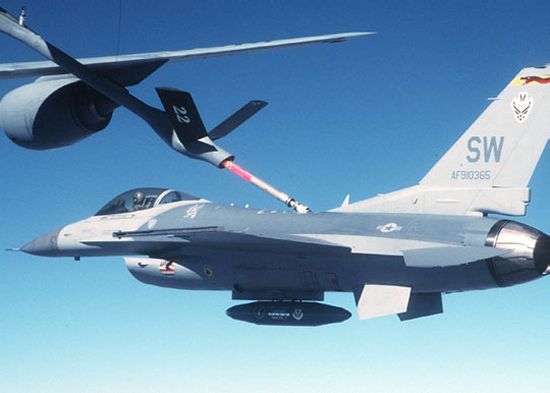
The major disadvantage of the boom-receiver system is that the boom must be located along the centerline and attached to the fuselage of the tanker aircraft. Drogues, on the other hand, are often carried along the wings as well so that multiple planes can be refueled simultaneously. Air Force tankers can easily be equipped with a drogue to refuel planes of the Navy or foreign militaries, like the example pictured below. This addition makes probe-equipped aircraft compatible with boom-receiver tankers. However, the boom system is too large and heavy to carry on Navy tankers, so Air Force planes are unable to refuel from any other service's tanker platforms.
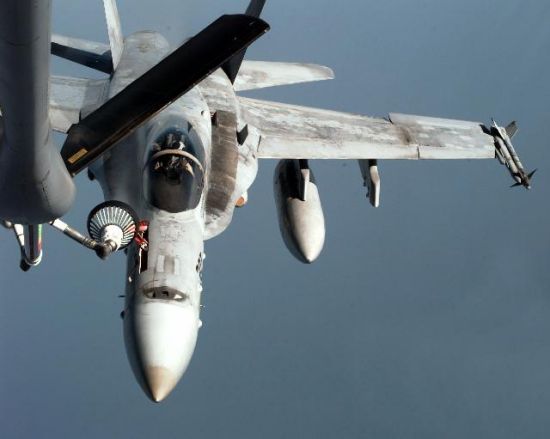
The reason the Air Force continues to use the boom-receiver system is that the short, rigid boom is capable of
transferring fuel at a much higher rate than the long, flexible hose of the probe-and-drogue method. These higher
flow rates are most important for large bombers that the Air Force feels would take too long to refuel using a
probe-and-drogue system. Since few other air forces operate bombers comparable in size to those flown by the
Americans, they need not worry about this tactical concern.
- answer by Molly Swanson, 30 January 2005
Read More Articles:


|
Aircraft | Design | Ask Us | Shop | Search |

|
|
| About Us | Contact Us | Copyright © 1997- | |||
|
|
|||